Pasaje Rivarola, located in the San Nicholas neighbourhood, is a calm, tranquil one-block refuge in Buenos Aires’ bustling downtown. This year, it celebrates its centenary.
Made up of eight five-storey apartment buildings, its salient feature is its mirror-image design with identical distribution on either side, along with additional four-corner buildings each boasting cupula apartments, accessible from Bartolome Mitre and Perón streets.
Construction work began in 1924, and took two years to complete. The project was funded by the La Rural Insurance Company who commissioned architects Petersen, Thiele and Cruz to lead the project with the German-founded construction company Geopé. Originally called ‘Pasaje La Rural,’ it was renamed Rodolfo Rivadola in 1957, in homage to a renowned Argentine lawyer and academic born in 1857.
The apartments were initially destined to be “propiedades de renta”(“rental apartments”), and it wasn’t until 1948 when the Ley de Propiedad Horizontal was passed that tenants were allowed to purchase properties, as opposed to simply renting them. Arguably the most quintessentially Parisian block in the city, thanks to its beautifully preserved and homogenous Beaux Arts architecture, its apartments have increased in value in recent years as demand has grown. Today, they sell for significantly more than neighbouring properties.
Due to its close proximity to the Supreme Court and Tribunales, the capacious apartments have long been favoured by lawyers to house their practices. To this day, there are still two or three law firms operating in each of the eight buildings.
Over time, the passageway has cultivated a rich community of its own. From the traditional picture framers Vidrierías del Centro at one end, to the longstanding ironmongers Gata at the other, the passage also houses two bookstores, a specialty coffee shop and The Museo de la Mujer. Revered musicians from Teatro Colón, as well as literary figures and politicians, are among the residents.
At number 115 is Asunto Impreso, a bookstore, publishing house and distributor that opened in 1995. It was one of the first cultural hubs of the passageway and regularly holds small events and book launches and readings. Longtime manager Fernando Vandamme said he was initially put off from having to go to the centre of the city to work – soon he understood that the passageway was like an island of peace in the middle of all the chaos.
Number 134 was the home of antique watch-restorer Miguel Raab, who had his store here for over 50 years. Known as the “Chacarita de Relojes” (“Graveyard of clocks”), he was a well-known specialist in the field. He died in 2010, yet people continue to visit and ask after him. All that remains is the empty clock shell hanging outside what was once his store.
At number 147 the Museo de La Mujer does vital work raising awareness of and defending women’s rights. It is a keen supporter of females in the arts, featuring new exhibitions every three weeks. Set up in 2006 by a group of socially committed feminists and working professionals, led by the historian Graciela Tejero Coni, it is privately funded by friends and members. The museum’s most recent show, curated by Caro Viacava, gave a platform to mid-career artist Patricia Di Paola who had never exhibited her work previously and addresses themes of complex interfamilial female relationships in her paintings.
Cafe Rivarola is one of the newest additions to the Pasaje Rivarola and has quickly become a much-loved meeting spot for local residents. It opened its doors (number 154) in November 2023 and offers great specialty coffee, buttery soft medialunas dished up warm with lashings of syrup, as well as delicious tarts and daily specials. It regularly hosts small curated exhibitions by local artists and illustrators – a recent show, curated by artist Sofia Watson, had a central theme of teatime and was fittingly titled ‘Lagrima en Jarrito.’
The cafe’s owners, Gabriela Wiesztort and Christian Lorences, discovered the passage serendipitously during a guided visit of the nearby Palacio Barolo. They had a birdseye view of the city and spotted Rivarola’s cupulas. They immediately fell for its architecture. “We wanted to preserve the harmony of the place, to create an oasis in the middle of the porteño downtown,” they explained in an interview.
For Mariela Ivanier, Communications director and the founder of PR agency Verbo Comunicación, the opening of Cafe Rivarola was the icing on the cake. She discovered Pasaje Rivarola during the 1990s thanks to Asunto Impreso, and she dreamed of living there ever since.
Her wish came true three years ago, and Mariela, who is also a keen art collector regularly invites people to visit her apartment for social teatime events to showcase her collection.
“It’s a quiet place, which comes to life when they shoot various video clips and films here, both local and international,” she said. “I deeply love its architecture and its colours. I’d like the City Government to pay it more attention, given its patrimonial status, and that this is its centennial year. It's what it deserves.”







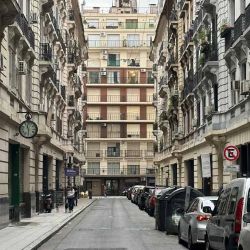
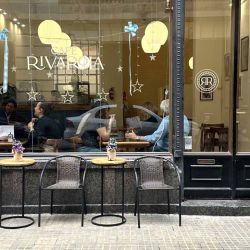
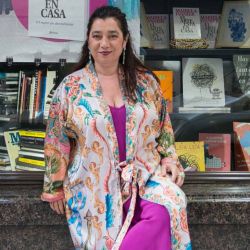
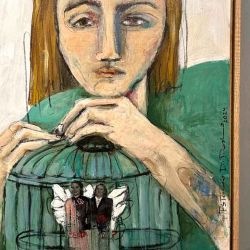
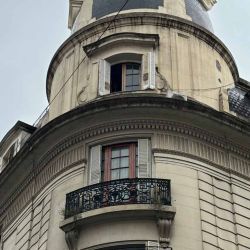
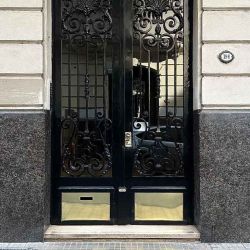
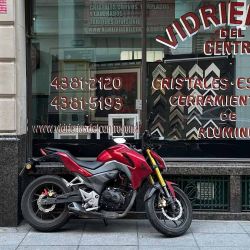



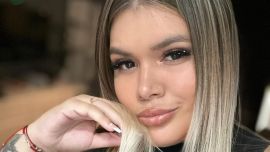
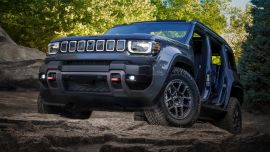










Comments